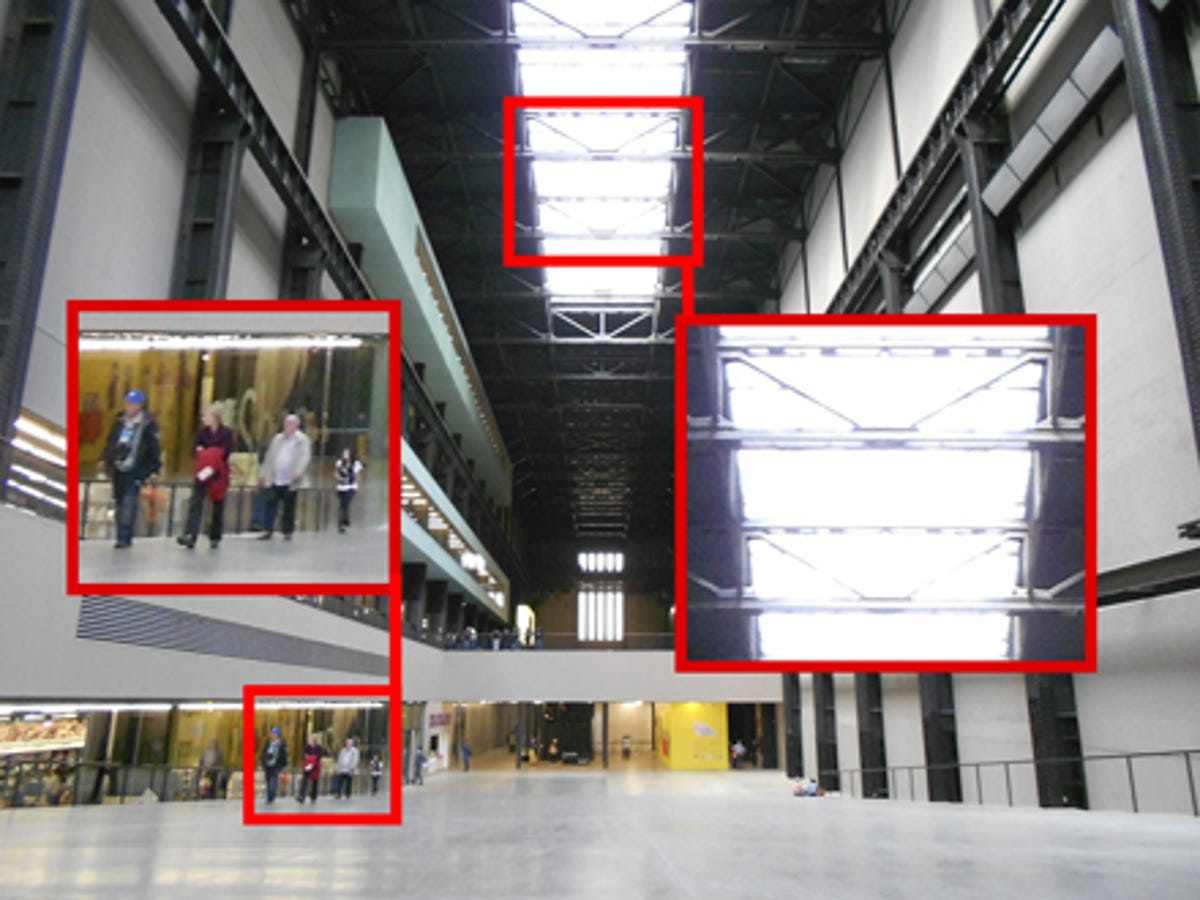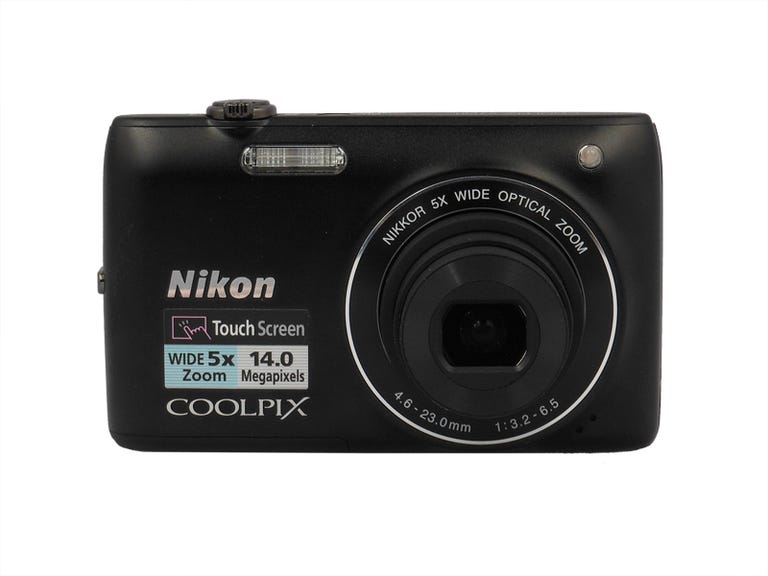 Why You Can Trust CNET
Why You Can Trust CNET Nikon Coolpix S4150 review: Nikon Coolpix S4150
For anyone after a cheap and cheerful snapper, this is one to consider, but take a look at the Coolpix S6150 before deciding what to buy where a small amount extra buys you a better camera.
Bigger isn't always better, which is why the S4150 is such an interesting proposition. As the smallest of Nikon's latest releases it boasts specs that come close to matching those on a far bigger snapper -- one that would also ship courtesy of a weightier price tag. There was only one way to see whether this £139 camera was a match for its bigger, more expensive rivals: put it to the test.
The Good
The Bad
The Bottom Line
Tech specs
Small and neat, with rounded corners and a matt metal case, the S4150 is roughly the size of a playing card, and less than an inch from front to back.
Yet despite the size it packs a 14 megapixel sensor and 7.5cm (3in) screen. The 5x optical zoom is eqivalent to 26 - 130mm in a 35mm camera, and there's a 4x digital zoom on top, taking the total to 520mm.
It's impossible to review this camera without comparing it to its close neighbour, the S6150, with which it shares many features. They both shoot video at a maximum resolution of 1280 x 720, despite the S6150 boasting a higher native resolution of 16 megapixels.
They both share an admirably low minimum sensitivity of ISO 80, and a maximum of ISO 3200, but the S4150 has a brighter lens overall, with an aperture range spanning f3.2 - f6.5, compared with the S6150's metric of f3.7 - f5.6. In part this will be explained by the differences in the zoom, with the S4150 offering a wider angle when zoomed out, and a shorter telephoto, thus losing less light when zoomed in. Where the S6150 counters vibration by shifting the lens, the S4150 applies digital correction, and can also shoot around 10% fewer images – 190 vs 210 – on a freshly-charged battery.
It's safe to judge these models as broadly similar, therefore, and to largely discount the different resolutions, which in daily use will make little difference to the quality of your results and what you can do with them once downloaded to your computer.
Shooting results and test shots
When you start to look at the output, though, the cameras quickly distinguish themselves, with the S6150 producing superior results when examined at 100%. Even at a fairly conservative sensitivity the S4150 introduced a considerable amount of noise into some of our images.
When shooting in the Tate Modern's Turbine Hall, which is largely lit by natural light coming in through glass panels in the roof, we had to boost the sensitivity to ISO 320 to properly expose the darker portions of the space. However, this resulted in a very dappled image, with considerable noise in the already lighter areas of the frame and loss of detail in the glass panels as the sensor became overloaded in this area and the struts and supports were lost in the bloom of incoming light.

Moving outside, we shot a rack of London hire bikes. Here the camera dialled down its sensitivity to just ISO 80, with much improved results. Colours were realistic and foliage was well rendered. There was still some pixellation and slight blooming, but when viewed full frame rather than zoomed 1:1 this wasn't noticeable, suggesting that for online use, when the image would almost certainly be shrunk, or for printing, most users would be happy with the results as rendered.
We shot the London skyline against a blue sky, with the sun to one side of us. When taken as a whole, the results were very impressive. Colours were bright and contrasts were sharp, lifting the buildings out of their surroundings. However, on zooming to 100%, we were disappointed to see that again there was noise in the scene, and some of the finer details, such as the narrow supports of cranes, were lost to compression.
Further, where sharp edges met the sky there was evidence of fine chromatic aberration, rendered as a pink fringe running down the trailing edge of a building.
The S4150 performed very well in our studio-lit still life test, in which we photographed a selection of common objects with different colours and surface textures. The results were clean and sharp, with fine detail in woven surfaces clearly rendered and reflective surfaces accurately captured without burning out in the frame.
We repeated the test twice - once using only the available ambient light and again using the flash. As you'd expect, the results were less clear in each of these, with the ambient light result mottled as the S4150 increased sensitivity to ISO 400 (from ISO 80) and the exposure time to 1/15 second (from 1/40).
Although exposure wasn't as balanced across the frame, the colours remained true to the originals, with only slight muting of tones on items that fell directly within the shadow of those behind them.
Shooting video
We used the highest possible resolution when shooting our videos -- 1280 x 720 at 30fps -- and were impressed by the results. Panning and zooming were both smooth, and although there was some stepping in its automatic compensation for more extreme changes in the light levels within the active frame, we found colours to be accurate and true to the originals.
You'll need to make a decision before you start shooting whether you want to use continuous auto focus or single focus, which sets the focal point on the basis of the first frame and sticks with it. We used the latter, which reduced the chance of mechanical noise on the soundtrack, but at the cost of flexibility, as we found that on zooming to the lens' fullest extent we sometimes ended up with unfocused results.
Design and build
The S4150 feels exceptionally sturdy, courtesy of its all-metal body. The buttons, which have been kept to the bare minimum, have good travel and a satisfying click, but most of the hardware buttons common to rival cameras have been moved instead to the touch screen, where a chunky interface makes it easy to control with a finger. There's a bundled stylus in the box if you have trouble using your bare hands, but we found this unnecessary, as even thumb jabs were accurate enough to navigate the menus.
Just about everything can be controlled through the screen, including shooting, courtesy of the Touch Shutter setting. If you don't get on with this, you can swap it for Touch AF/AE, or subject tracking.
A lot of the most useful features, such as wind noise reduction on movies and blink detection on stills, are turned off by default, so it pays to have a quick trip through the menus to switch these on before setting out on your first shooting expedition.
Files are written to SD, SDHC or SDXC, and there's 20MB of internal memory, which is sufficient for a single shot at the highest resolution with the least compression.
It has a number of smart shooting options, including one of the most versatile face detection features we've yet seen. You have two options to choose from: auto or smart portrait mode, with the former detecting up to 12 faces and focusing on the one it judges closest to the lens. The latter works with a maximum of three faces, and focuses on the one that's closest to the centre of the frame, regardless of its physical proximity.
There's a handy ISO range setting options, too, which lets you limit the degree to which the S4150 can hike up the sensitivity, setting a limit to ISO 800 if you want to minimise the grain in your images. Less impressive was the limit on macro shooting, which won't get you any closer than 10cm.
Conclusion
At £139, the S4150 isn't expensive, but it's only £20 shy of the more capable S6150, which ups both the zoom and the pixel count. We're less interested in the latter of those two metrics, but the extra zoom is worth having.
More importantly, although we're judging each of these camera in isolation, the S6150 delivered significantly better images, and that's certainly worth the extra money.


